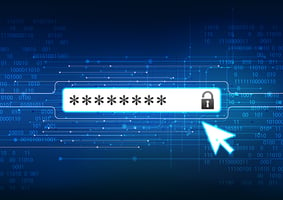The control panel of your website may grant access to the PatientInbox, a component of Digital...
How hackers scam you
Cybercriminals are employing more sophisticated techniques by sending emails that appear to be legitimate requests, with the intent of deceiving individuals into revealing their passwords and accessing Personal Identifiable Information (PID). This deceptive practice is referred to as phishing.
One might initially think that this issue is solely the responsibility of the provider. However, it is important to understand that these emails are being sent to patients.
Scammers do not indiscriminately send emails to random addresses, as such actions would likely raise suspicion and be detected by email providers.
Cybercriminals often utilise lists of email addresses that are potentially linked to specific accounts. By publicly displaying your email on your website, you inadvertently provide hackers with the necessary information to target your organisation. This can lead to unauthorised access to contact lists or even allow them to impersonate your practice to deceive patients, a tactic known as spoofing. It is crucial to be aware that these attackers employ automation and Artificial Intelligence to enhance the effectiveness of their malicious activities.
While you may have filters and protective measures in place, it is essential to recognise that these do not eliminate the risk of human error.
-
A request to confirm your password for accessing emails or resetting it could potentially be a scam. In an instant, cybercriminals can gain access to all the information within that email account and even change your password without your awareness. Once they have access, they can redirect other password reset requests to themselves, thereby gaining entry to additional systems.
-
Consider the number of emails you receive that include links, attachments, or embedded images. These elements can potentially harbour viruses, which can be installed without requiring administrative permissions. A prevalent type of malware is a 'keylogger', which records every keystroke you make on your keyboard, including sensitive information such as passwords.
This is why using a SmartForm on your website is so important. It provides an additional level of cover to ensure that what is being sent to you has come from a real person and not an automation (robot).
We have all see the 'I am not a robot' feature, this is an industry standard and is called a CAPTCHA (Completely Automated Public Turing test to tell Computers and Humans Apart).
The SmartForm itself will also save time and hassle.
Reduces queries on already signposted matters.
-
Patients are encouraged to visit the website to initiate contact, as this approach increases the likelihood of obtaining accurate information, rather than relying on potentially misleading news reports.
Prevents needing to follow up with patients for missing information
-
SmartForms guarantee that you receive all the necessary information on the first attempt.
Avoids the information in your email autoresponder being missed.
-
Patients frequently overlook any autoresponders you have set up. By directing patients to visit the website, you can ensure they are properly guided and confirm their acknowledgment of having read any terms or service levels.
By adopting this approach, you safeguard your practice, optimise time management, and implement a more efficient method for patient communication.

